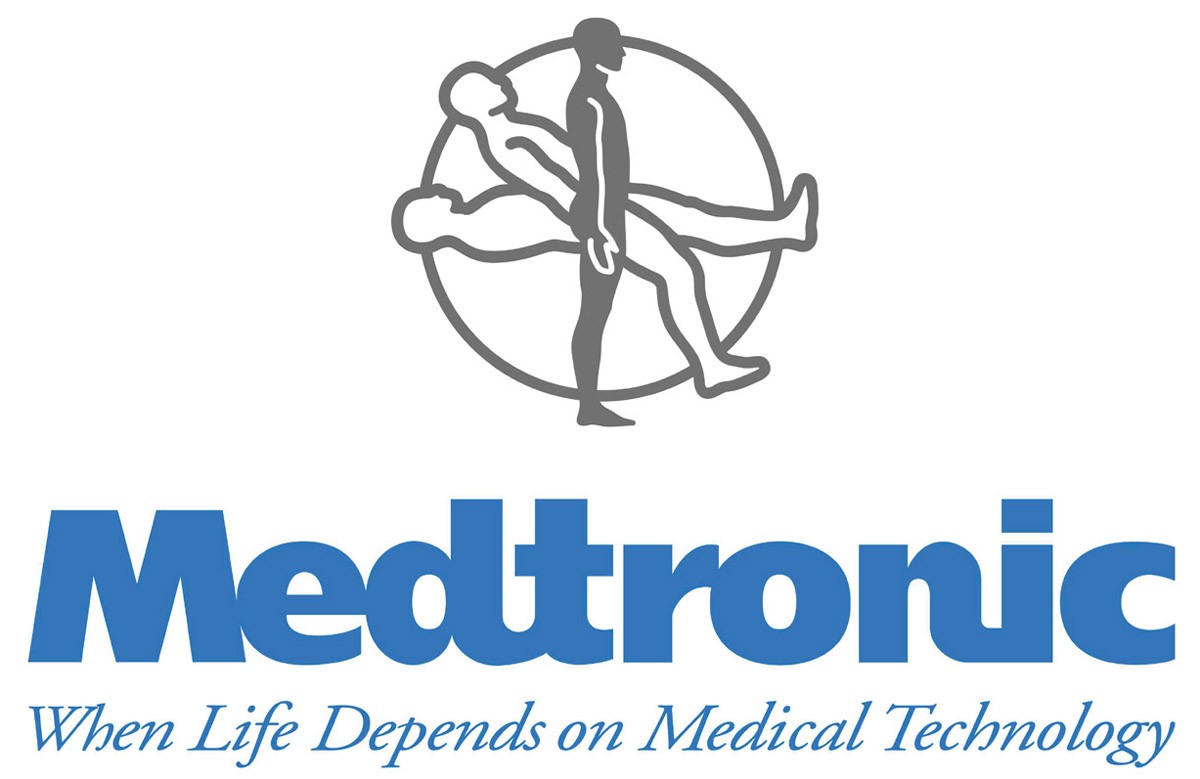
Investment Action
We are bullish on MDT on the company’s commanding market share in many of its medical devices, 48.5% in Cardiac Rhythm Management segment, 61.96% in Diabetes segment and 42.84% in the Neuromodulation segment. Recent acquisitions and upcoming product innovations will help spur growth and the company is projecting about 7.8% revenue growth per year over the next 5 years. We believe that the selloff in November 2016 has caused the stock to be discounted relative to its fundamentals and along with its strong dividends and dividend growth history, MDT makes for a solid investment.
Since reaching an all-time high of USD 88 in July 2016, shares of MDT tumbled in November following the election of Donald Trump. With the threat of the affordable care act, colloquially known as Obamacare, being repealed looming, many stocks in the healthcare industry fell sharply. Coupled with a less than stellar Q2, where MDT beat EPS estimates by USD 0.01 but missed on revenue by about USD 160 mn, and the conditions seem right for MDT to fall close to their 52 week low.
However, we believe that tumble in the share price has caused MDT to become attractively valued. Management had attributed the poor performance of Q2 2016 to delays in product introduction for that quarter. Despite the delay, MDT was still able to grow sales by 3% on a constant currency basis and grew EPS by 9%.
MDT also has a slew of new products that have recently received approval from the FDA and should see distribution within this year. In April 2016, the FDA approved the MDT’s Micra, the world’s smallest pacemaker. Coming in at the size of about 1 inch, the Micra is about 10% the size of a traditional pacemaker and due to its size and implementation method, could lead to less complications that come from more invasive surgeries. The device also does not require for wires to lead out of the device from the heart. Besides pacemakers, MDT also received approval from the FDA in October 2016 for the world’s first “artificial pancreas”, the MiniMed 670G. The device, which is meant for Type-1 diabetic patients, automatically monitors the patients’ blood glucose levels and administers or withholds insulin. The MiniMed 670G is estimated to cost between USD 5,000 to USD 8,000 per device with the disposable sensors costing an additional few thousand dollars a year. The JDRF, a major charitable organization dedicated to Type 1 diabetes, estimates that cost associated with Type 1 diabetes totals about USD 14 bn a year. Barring issues with getting insurers to cover the cost of such devices, MDT is likely to be able to gain a large share of that market.
Key Points:
Technicals. MDT has been moving in a robust uptrend since August 2011 with the 20 and 60 week moving average repeatedly holding price up. A sharp correction occurred recently after price formed an all-time high at around 89.00 psychological round number resistance, turning the 20 week moving average below the 60 week moving average signalling a slight change in the preceding bullish sentiment. Nonetheless, the confluence of 200 week moving average and 70.78 support area was strong enough to halt the correction, keeping the long term uptrend alive. There was a Bullish Engulfing Bar rejection off the support area on the week ended 6 January 2017 showing the resurgence of the bulls. Additionally, the bullish follow through on the week ended 13 January 2017 succeeded in breaking price above the 74.31 immediate range high.
MDT weekly chart

Resistance 1: 79.45 ; Resistance 2: 84.28 , Support 1: 70.78 ; Support 2: 64.00
Red line = 20 period moving average, blue line = 60 period moving average,
Green line = 200 period moving average
Source: Bloomberg, PSR
![]()
Important Information
This report is prepared and/or distributed by Phillip Securities Research Pte Ltd ("Phillip Securities Research"), which is a holder of a financial adviser’s licence under the Financial Advisers Act, Chapter 110 in Singapore.
By receiving or reading this report, you agree to be bound by the terms and limitations set out below. Any failure to comply with these terms and limitations may constitute a violation of law. This report has been provided to you for personal use only and shall not be reproduced, distributed or published by you in whole or in part, for any purpose. If you have received this report by mistake, please delete or destroy it, and notify the sender immediately.
The information and any analysis, forecasts, projections, expectations and opinions (collectively, the “Research”) contained in this report has been obtained from public sources which Phillip Securities Research believes to be reliable. However, Phillip Securities Research does not make any representation or warranty, express or implied that such information or Research is accurate, complete or appropriate or should be relied upon as such. Any such information or Research contained in this report is subject to change, and Phillip Securities Research shall not have any responsibility to maintain or update the information or Research made available or to supply any corrections, updates or releases in connection therewith.
Any opinions, forecasts, assumptions, estimates, valuations and prices contained in this report are as of the date indicated and are subject to change at any time without prior notice. Past performance of any product referred to in this report is not indicative of future results.
This report does not constitute, and should not be used as a substitute for, tax, legal or investment advice. This report should not be relied upon exclusively or as authoritative, without further being subject to the recipient’s own independent verification and exercise of judgment. The fact that this report has been made available constitutes neither a recommendation to enter into a particular transaction, nor a representation that any product described in this report is suitable or appropriate for the recipient. Recipients should be aware that many of the products, which may be described in this report involve significant risks and may not be suitable for all investors, and that any decision to enter into transactions involving such products should not be made, unless all such risks are understood and an independent determination has been made that such transactions would be appropriate. Any discussion of the risks contained herein with respect to any product should not be considered to be a disclosure of all risks or a complete discussion of such risks.
Nothing in this report shall be construed to be an offer or solicitation for the purchase or sale of any product. Any decision to purchase any product mentioned in this report should take into account existing public information, including any registered prospectus in respect of such product.
Phillip Securities Research, or persons associated with or connected to Phillip Securities Research, including but not limited to its officers, directors, employees or persons involved in the issuance of this report, may provide an array of financial services to a large number of corporations in Singapore and worldwide, including but not limited to commercial / investment banking activities (including sponsorship, financial advisory or underwriting activities), brokerage or securities trading activities. Phillip Securities Research, or persons associated with or connected to Phillip Securities Research, including but not limited to its officers, directors, employees or persons involved in the issuance of this report, may have participated in or invested in transactions with the issuer(s) of the securities mentioned in this report, and may have performed services for or solicited business from such issuers. Additionally, Phillip Securities Research, or persons associated with or connected to Phillip Securities Research, including but not limited to its officers, directors, employees or persons involved in the issuance of this report, may have provided advice or investment services to such companies and investments or related investments, as may be mentioned in this report.
Phillip Securities Research or persons associated with or connected to Phillip Securities Research, including but not limited to its officers, directors, employees or persons involved in the issuance of this report may, from time to time maintain a long or short position in securities referred to herein, or in related futures or options, purchase or sell, make a market in, or engage in any other transaction involving such securities, and earn brokerage or other compensation in respect of the foregoing. Investments will be denominated in various currencies including US dollars and Euro and thus will be subject to any fluctuation in exchange rates between US dollars and Euro or foreign currencies and the currency of your own jurisdiction. Such fluctuations may have an adverse effect on the value, price or income return of the investment.
To the extent permitted by law, Phillip Securities Research, or persons associated with or connected to Phillip Securities Research, including but not limited to its officers, directors, employees or persons involved in the issuance of this report, may at any time engage in any of the above activities as set out above or otherwise hold an interest, whether material or not, in respect of companies and investments or related investments, which may be mentioned in this report. Accordingly, information may be available to Phillip Securities Research, or persons associated with or connected to Phillip Securities Research, including but not limited to its officers, directors, employees or persons involved in the issuance of this report, which is not reflected in this report, and Phillip Securities Research, or persons associated with or connected to Phillip Securities Research, including but not limited to its officers, directors, employees or persons involved in the issuance of this report, may, to the extent permitted by law, have acted upon or used the information prior to or immediately following its publication. Phillip Securities Research, or persons associated with or connected to Phillip Securities Research, including but not limited its officers, directors, employees or persons involved in the issuance of this report, may have issued other material that is inconsistent with, or reach different conclusions from, the contents of this report.
The information, tools and material presented herein are not directed, intended for distribution to or use by, any person or entity in any jurisdiction or country where such distribution, publication, availability or use would be contrary to the applicable law or regulation or which would subject Phillip Securities Research to any registration or licensing or other requirement, or penalty for contravention of such requirements within such jurisdiction.
This report is intended for general circulation only and does not take into account the specific investment objectives, financial situation or particular needs of any particular person. The products mentioned in this report may not be suitable for all investors and a person receiving or reading this report should seek advice from a professional and financial adviser regarding the legal, business, financial, tax and other aspects including the suitability of such products, taking into account the specific investment objectives, financial situation or particular needs of that person, before making a commitment to invest in any of such products.
This report is not intended for distribution, publication to or use by any person in any jurisdiction outside of Singapore or any other jurisdiction as Phillip Securities Research may determine in its absolute discretion.
IMPORTANT DISCLOSURES FOR INCLUDED RESEARCH ANALYSES OR REPORTS OF FOREIGN RESEARCH HOUSE
Where the report contains research analyses or reports from a foreign research house, please note:
